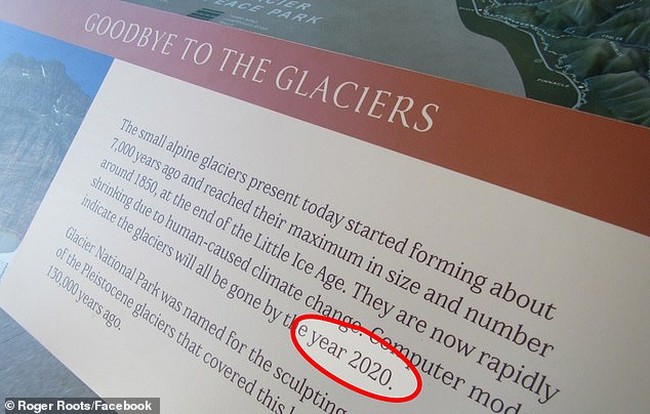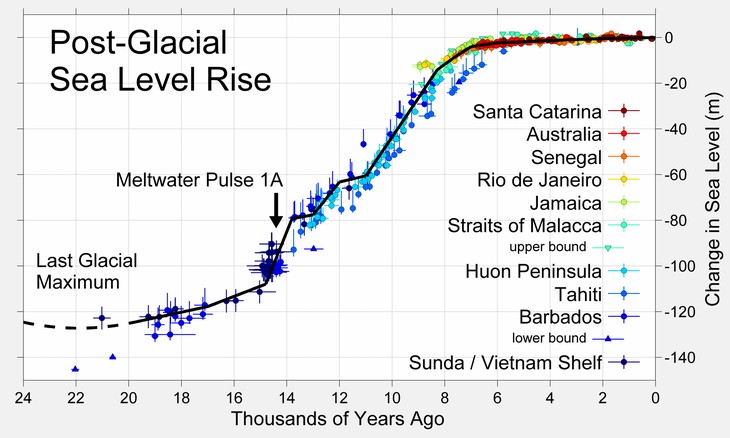I got a bit of pushback on my post regarding The Lancet study that showed that deaths from excessive cold are 9x higher than from excessive heat.
Unsurprising, since I brought up global warming/climate change. As always I noted that it makes sense to do (good) climate science. I just don’t believe that many people are doing good climate science because the entire enterprise is compromised by politics. The science itself is horribly complex, but the results the academics, politicians, and grantors want are simple: promote the Narrative that the only thing that will save the Earth from total destruction is a state takeover of the economy.
Climate alarmism is nearly a religion, and as with all religions any dissent from the orthodoxy is committing a heresy. And as with millenarian religious movements, predictions of imminent doom are made and when the doom inevitably doesn’t arrive, dates are shifted.
Climate change’s religious nature is exposed by its utter immunity to facts. The religious texts are the climate models, and yet no amount of failures in the predictions of the models has any impact on belief. Just as Paul Ehrlich, who should be in line for worst prophet in human history, still gets plaudits for his always-wrong Malthusian forecasts, climate scientists get rewarded with acclaim despite never being right even once.
One of my favorite examples of this phenomenon is the case of the Maldives, a tiny group of over 1000 islands nestled in the Indian Ocean.
Back in 1988 climate scientists were predicting that the Maldives would be under water by 2018 or so. Melting icecaps and glaciers would increase sea levels that the islands, few of which are much higher than sea level, would be swamped. It was alarming, and of course the political leaders of the islands begged for foreign aid to deal with the crisis.
Rising sea levels were also fouling the ground water of the islands (shockingly these tiny islands actually have groundwater) and before the residents were drowned by rising seas they would die from lack of water–by 1992, in fact. Thirty years ago. Today they are predicting that the groundwater will be fouled in…30 years.
Shockingly, today the Maldives are larger, populated by more than twice as many people, and a tourist destination. Here’s the front page of the Maldives’ tourism webpage:

Fear not, dear reader. The Maldives are still under threat. In fact, imminent destruction of the islands is…25-30 years away. Just as it was in the 80’s and 90s. Better visit now while they still exist. And don’t forget to send some of that sweet climate mitigation aid to help out the residents.
Thirty years is a great time frame for imminent disaster. It is close enough to worry about, but far enough to have the prediction forgotten by the time it arrives.
One thing you can be sure of, though, is that nobody with money to invest believes a word of it, because The Maldives is a thriving tourist destination on which billions have been invested to cash in on its beauty. No investor or bank would put that kind of money at risk if they believed that the investment would be under water in a couple of decades.
Instead they expanded the airport. The UN predicts the islands will be gone, but capital investors think there is a ton of money to be made in the next few decades.
Another great example is Glacier National Park in Montana. In 2020 the National Park Service was forced to remove signage describing the beauty of the park lamenting the fact that the glaciers would be gone by 2020. They are of course still there, just as the polar ice caps that were supposed to have melted completely by the last decade are still there.
Only a government agency could be so immune to common sense as to put up signs that predicted such a thing within a reasonable time frame, since removing the signs while the glaciers were still there is terribly embarrassing. They should have picked a phony date farther out into the future.

Now it is true that the glaciers have been melting over the years–in fact, they have been doing so for nearly 20,000 years, and at some point they will indeed be gone. It is also true that sea levels have been rising, as they have been for about that same period of time. They are rising much slower than in centuries past, not faster.

That change in sea levels is measured in meters (about 3 feet), amounting to over 400 feet since the last glacial maximum. Sea level change over the past century has been between 1 and 2 centimeters a decade. Some fraction of that rise may indeed be due to increased melting due to human induced climate change, but is hardly worrisome when viewed in light of historical changes. When 400 feet of sea level rise happened since the last ice age, it should be assumed that an inch or two can be managed with today’s technology.
After all, much of Denmark has been below sea level for centuries. If 17th century technology could deal with that problem, 21st century technology might be able to deal with it too.
Yet we still get predictions like this:

Climate science has been filled with apocalyptic predictions since I became aware of its existence. It has been dominated by Malthusians convinced that the world was going to end from some disaster or another, yet in the main life has gotten both better and longer.

That doesn’t mean we should be careless about our impact on nature. In my youth air and water pollution were indeed a serious problems, and indifference to nature always exacts a price. I am not old enough to remember when the Cuyahoga River caught fire due to pollution, but the image is burned into my memory because the event was legendary and I was a voracious reader in my youth, when Paul Ehrlich was a big deal.

But history has shown that ecological thinking is a luxury good, engaged in by the wealthy. Hence the best way to take care of the environment is to increase the wealth of all people in the world. Poorer people will tolerate almost any ecological disaster if it allows them to live even a marginal existence, where wealthy people are willing to expend a lot of resources to preserve wilderness and clean things up.
The prescriptions the Malthusians have to “heal the world” are precisely the wrong ones. The best way to get people to invest in a cleaner and healthier world is to make people wealthy, not to scare them into accepting poverty.
Relying on scary predictions and exaggerated claims breeds cynicism, just as the COVID hysteria has led to a collapse in faith in government and the media.
Lying to people may seem to work in the short and even medium term, but it erodes faith in the legitimacy of elites. As it should.
I think Bjorn Lomberg has the right approach to the issue: take the possibility of anthropogenic climate change seriously while putting it in perspective, and making investment judgments based upon cost/benefit analyses.
The following video is a great introduction to his thinking and how to think in a rational manner about the issues. The video is long, so bookmark it and watch it at your leisure:









Join the conversation as a VIP Member